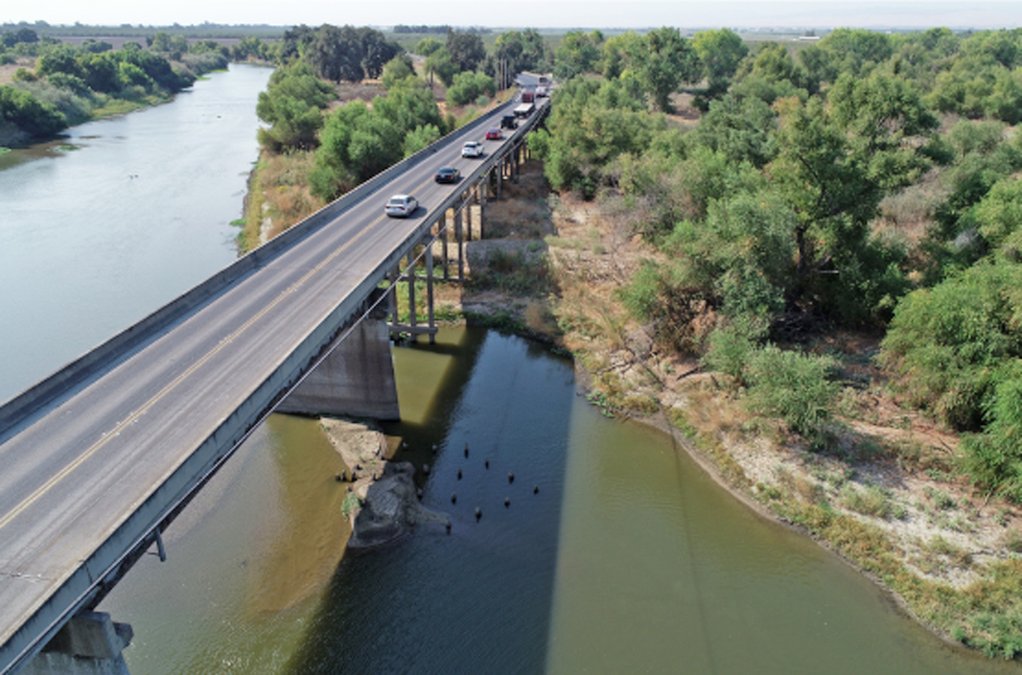The Stanislaus County Board of Supervisors was expected to vote on an amendment Tuesday to increase the budget for the Crows Landing Road bridge over the San Joaquin River for the sixth time.
The latest budgetary amendment is for $40,300 and is to repair some bank erosion from the winter storms and bat management. The amendment will raise the total cost of the bridge project to $2,326,701.
The bridge retrofit has been a long-time project for the county, going back to 1997, when it was identified as one of three critical links in the county that must remain open at all times. The other two were the McHenry Bridge over the Stanislaus River and the Ninth Street Bridge over the Tuolumne River. Both the Ninth Street Bridge and McHenry Bridge replacement projects have been completed.
The Crows Landing Bridge was built in 1949 and consists of a steel stringer and steel plate girder superstructure on reinforced concrete pier walls and reinforced concrete pile bents with reinforced concrete winged abutments. The entire bridge span is approximately 670 linear feet in length, and the average daily traffic volume is approximately 6,700 vehicles per-day.
In March 2008, Public Works Department staff requested that the California Department of Transportation re-program this important bridge in Stanislaus County to complete the project design. Department staff and NVS, Inc. worked with Caltrans Local Assistance - Structures for a year to develop the final seismic strategy. Per the latest Caltrans bridge report issued in February 2018 and Federal Highway Administration’s 1995 Coding Guide, this bridge has been determined to be vulnerable to damage if there is a significant flood event on the San Joaquin River. The bridge is also on the Local Seismic Safety Retrofit Program list due to seismic deficiencies and is listed as functionally obsolete.
The proposed replacement bridge will improve safety and capacity within this segment of Crows Landing Road. The purpose of this project is to remove the existing structurally deficient structure and replace it with a new bridge designed to current structural and geometric standards while minimizing adverse impacts to the San Joaquin River and the surrounding riparian area.
The Board approved the Professional Design Services Agreement with NV5, Inc. on Oct. 19, 2010, to complete the engineering and environmental phases. The environmental clearance was obtained for the bridge for the National Environmental Protection Act on April 9, 2013, and the California Environmental Quality Act clearance was approved by the Board on Aug. 13, 2013.
Construction on the bridge began in spring of 2021 and almost immediately started experiencing setbacks. The first one came when the environmental compliance team found a protected bird nesting within the project limits. This required the county’s consultant team to immediately coordinate with the Department of Fish & Wildlife to determine the best course of action and to prepare an Incidental Take Permit application in case the bird got disturbed by construction activities.
Next came efforts for bat management. And then the rains started.
“There were additional efforts in bat management and exclusions during the demolition of the existing bridge,” the county Public Works staff wrote in the board report. “Both were unforeseen efforts, and the expenses are now needing to be re-budgeted for the consultant agreement. Most recently, because of the storms in January 2023, some bank erosion occurred within the project site due to the high flows in the San Joaquin River. Therefore, some slope stability work needed to be defined and detailed out for the contractor in the field.”
The primary funding for the project comes from the Federal Highway Bridge Program administered by the Federal Highway Administration through Caltrans Local Assistance. When first approved in 2010, the cost was $942,760. Since then, a series of additional expenditures have been approved that have raised the budget up to the expected $2.3 million. The $40,300 needed for this amendment will be funded with $35,678 of HBP funds and $4,622 of RMRA funds.
The construction phase is scheduled to be completed in the fall/winter of 2023, depending on if river work can re-start in time to meet the construction window for in water work.





